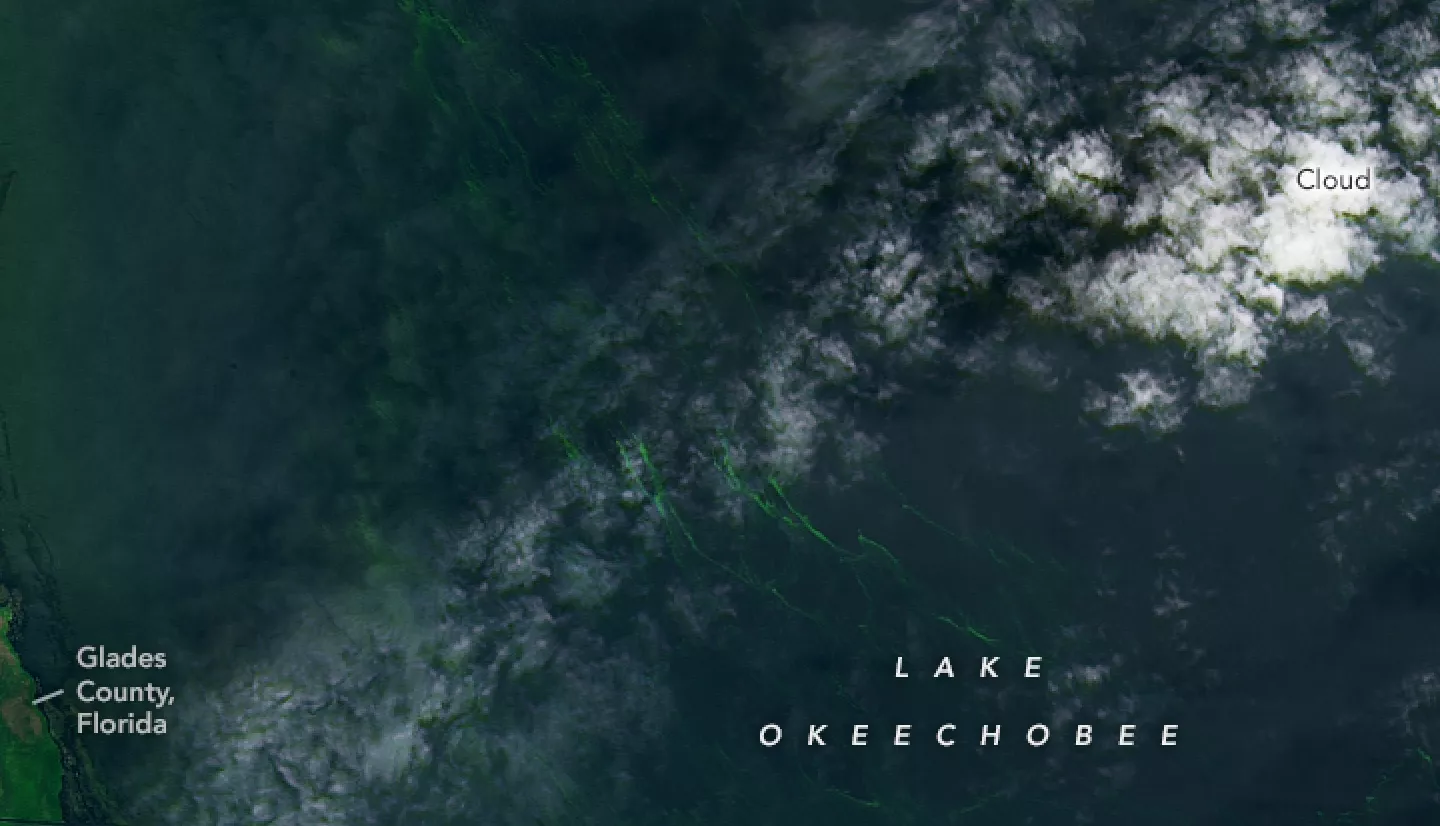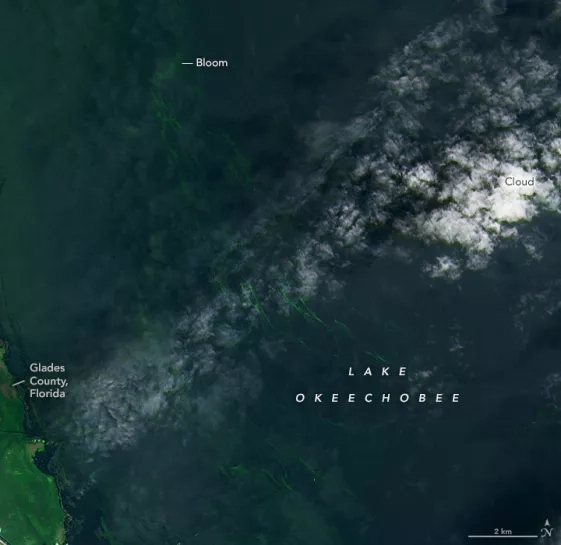Lake Okeechobee is Florida’s largest lake. In recent summers, blooms of harmful blue-green algae have grown in the water. NASA has been part of an effort to help track these events.
Blue-green algae, also known as cyanobacteria, can produce toxins. In high concentrations, those toxins can sicken people, pets and wildlife. Algal blooms can also contaminate drinking water and cause recreational sites to close.
Each single-celled algae organism is too small to be seen with the naked eye. But their vast blooms can be seen from space. For instance, the Operational Land Imager (OLI) on Landsat 8 captured a July 2022 bloom. Nearly half the lake was algae-covered at the time. The satellite images showed large green swaths on the water.
NASA scientists use such observations to help the Cyanobacteria Assessment Network, or CyAN. The researchers collect satellite imagery of water bodies across the United States, including Lake Okeechobee. Their analysis helps create weekly reports on cyanobacteria concentrations.
More information available at the NASA Earth Observatory story Blooming Lake Okeechobee




